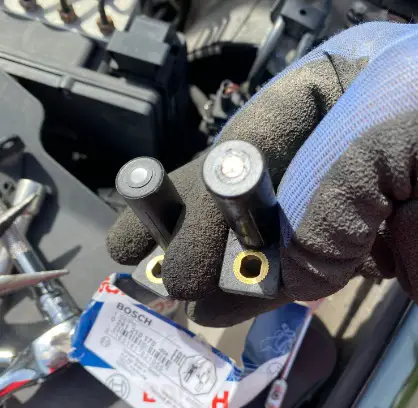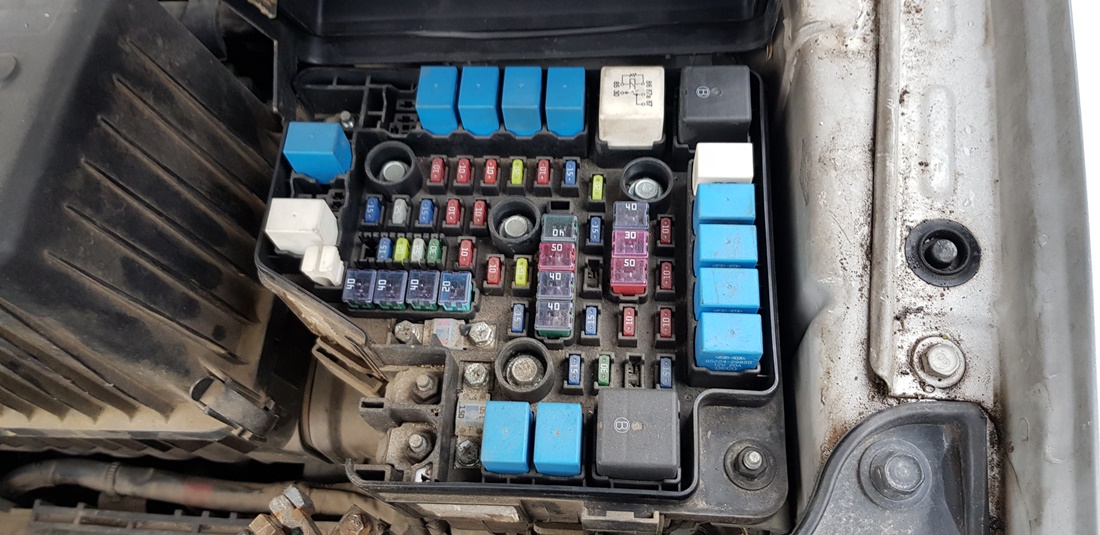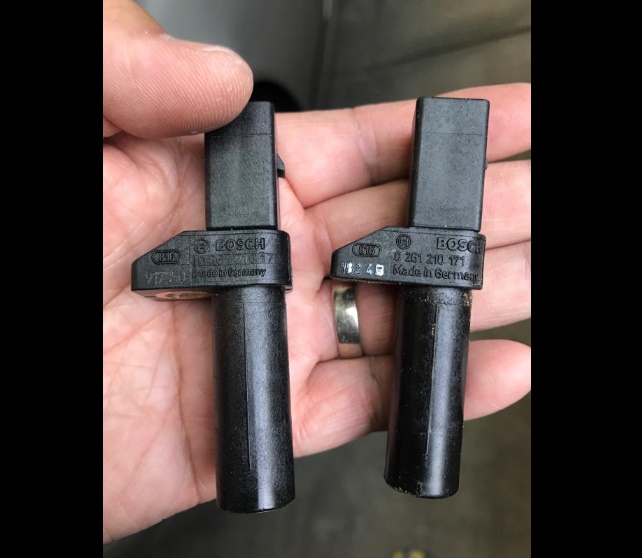The turbo is designed to give power to your engine and to boost acceleration. The turbo is driven by exhaust gases. It is located with one side connected to the exhaust manifold and the other side to the mass airflow sensor.
Because the turbo is powered by exhaust gases, over time, it can get clogged up by a carbon deposit. A clogged turbo will result in a lack of power. If left unchecked, this can lead to premature wear.
You should clean your turbo when you notice the lack of power or every 30,000 miles. Here is how to clean a turbo without removing it:
Key Takeaway
- There are various methods available, such as using turbo cleaner spray or turbo cleaning fluid, to clean a turbo without removing it from the car.
- Cleaning a turbo without removing it can be done by using specialized cleaning products such as Tecflow Speed Cleaner or Wynn’s Turbo Cleaner Spray, and by revving the engine to 4000 RPM to exercise the vane actuator.
- A turbocharger, or simply a turbo, is a device that increases the power and efficiency of an engine by forcing more air into the combustion chamber.
What Is a Turbo in a Car

A charger, commonly known as a turbo, is a device used in car engines to increase power and efficiency.
It works by harnessing the energy from the engine’s exhaust gases to compress the intake air before it enters the combustion chamber.
This compressed air allows more fuel to be burned, resulting in a higher power output.
Turbochargers are commonly used in both gasoline and diesel engines to improve performance by providing a significant boost in horsepower and torque.
They play a crucial role in enhancing engine efficiency and delivering better overall performance.
How To Clean a Turbo Without Removing It
The turbo gives power to your engine and makes driving and accelerating more exciting. But, it can also get dirty from the carbon buildup and fail. In the worst-case scenario, your engine can stop.
Some of the early signs of clogging aren’t very consequential, but they’re easy to recognize. Left unchecked, these can become worse over time and cause catastrophic damage.
There is a way how to clean a turbo without removing it. Here is how to clean a turbo without removing it:
1. Park your car outside

Your vehicle will be running while you are cleaning your turbo, so you need a place with great ventilation. Park your vehicle outside, preferably in the shade, if it’s too hot outside. Whatever works for you, just get comfortable.
2. Get a turbo cleaner and gloves

You will need a turbo cleaner in order to clean your turbo. The one that I use costs around $12. I got mine  . If you have some leftover turbo cleaner, that is fine.
. If you have some leftover turbo cleaner, that is fine.
But, I recommend that you use the whole bottle for one cleaning. Also, the engine will be at a working temperature, so it’s best if you have gloves and don’t get burned.
3. Warm up your engine

Start your vehicle and run it until it reaches the proper operating temperature. Your vehicle will need to be working throughout the whole cleaning process. So, if you are not comfortable working around a hot engine, put on some long sleeves and gloves.
4. Disconnect the air inlet pipe

Locate your mass airflow sensor and disconnect the air inlet pipe that goes after the mass airflow sensor. The location of the MAF will be different for different vehicles.
The turbo is powered by exhaust gases. So, one side of the turbo is connected to the exhaust manifold and the other one is connected to the air intake. Make sure to disconnect the air inlet after the MAF sensor and not before the MAF sensor.
5. Spray the whole turbo cleaner
Spray the whole can of turbo cleaner in the air inlet with short sprays. Do not spray it in one long spray as you may overflood the engine.
As you spray the turbo cleaner, you will notice that the engine revs will increase for a couple of seconds. This is because the air-to-fuel ratio is unbalanced. Wait for the engine to calm down before spraying again.
6. Leave the engine idling for 5 minutes

After you spray the whole can of turbo cleaner, leave the engine running with the air inlet disconnected. Do not rev the engine at this point, just let it idle.
You should notice a change in the exhaust gases coming out from the tailpipe. This is why I said you should do this in a place with great ventilation.
7. Rev up the engine

Rev up the engine to 3000 RPMs 8-10 times. Do not exceed the 3000 RPMs. As soon as you reach 3000 RPMs let go of the gas pedal and then rev again. Again, you should notice a different smoke from the tailpipe.
8. Reconnect the air inlet pipe
Reconnect the air inlet pipe as it was before and take your vehicle for a 20-minute ride. Before you drive the car, make sure that there is no air leaking from the inlet. If your screws are rusty, replace them with new ones.
Most Common Signs Of a Clogged or Failing Turbo
- Loss of power or decreased acceleration.
- Increased exhaust smoke, particularly black or blue smoke.
- Loud whining or whistling noise coming from the turbocharger.
- The engine running hotter than usual.
- Poor fuel efficiency.
- Oil leaks around the turbocharger.
- Check the engine light illuminated on the dashboard.
- Reduced boost pressure.
Loss of Power or Decreased Acceleration
One of the most common signs of a clogged or failing turbo is a noticeable decrease in engine power and acceleration. The turbocharger plays a crucial role in boosting the engine’s performance, so any issues with it can result in a loss of power.
Increased Exhaust Smoke
Another telltale sign of a clogged or failing turbo is the presence of increased exhaust smoke, particularly black or blue smoke. This can occur when the turbocharger is not functioning properly, causing an imbalance in the air-fuel mixture and resulting in excessive smoke being expelled from the exhaust.
Loud Whining or Whistling Noise
A failing turbocharger often produces a distinct whining or whistling noise. This noise can be caused by worn-out bearings or damaged compressor blades within the turbocharger. If you hear such noises coming from your engine, it may indicate a problem with the turbo.
Engine Running Hotter than Usual
Inefficient operation of the turbocharger can lead to elevated temperatures within the engine. A clogged or failing turbo may hinder proper airflow, causing the engine to run hotter than normal. Monitoring the engine temperature is crucial to identify any potential turbo-related issues.
Poor Fuel Efficiency
When a turbocharger is not functioning optimally, it can affect fuel efficiency. A clogged or malfunctioning turbo may disrupt the combustion process, resulting in decreased fuel economy. If you notice a significant decrease in your vehicle’s fuel efficiency, it could be a sign of a turbo problem.
Oil Leaks around the Turbocharger
Oil leaks around the turbocharger are a clear indication of a problem. This can occur when seals or gaskets within the turbocharger start to wear out or become damaged. Oil leaks should be addressed promptly, as they can lead to further damage and potential engine problems.
Check Engine Light Illuminated
A clogged or failing turbocharger can trigger the check engine light on your dashboard. The vehicle’s onboard diagnostics system picks up abnormalities related to the turbocharger’s performance and alerts you through the warning light. It is crucial to have the issue diagnosed and resolved to prevent further damage.
Reduced Boost Pressure
A decrease in boost pressure is often associated with a failing turbocharger. Boost pressure refers to the amount of compressed air being delivered to the engine. If you notice a significant drop in boost pressure, it may indicate a problem with the turbocharger, requiring inspection and repair says Car Performance Boss.
What Causes a Clogged Turbo In a Car?
- Lack of oil or poor-quality oil
- Oil starvation
- Oil contamination
- Blocked or leaking pipes
- Lack of priming
- Foreign materials entering the turbine/compressor
- Damage caused by foreign objects
- Clogged air filter
- Compression issues in the engine block
- Leaks and cracks in the engine
How Often Should You Clean Your Turbo?
Ideally, you should clean your turbo every 15,000 to 20,000 miles.
A turbocharger can become clogged with dirt and debris over time, which can lead to decreased performance or even failure.
You may need to clean your turbo more frequently if the engine is used in dusty conditions or if it’s been working harder than usual.
Regular cleaning can help to ensure optimal performance from the turbo and prolong its life.
What Happens If Your Turbo Is Clogged?
If your turbocharger is clogged, it can have negative effects on your car’s performance and engine. Some of the potential consequences include:
- Reduced Power Output: A clogged turbo restricts the flow of air into the engine, leading to decreased power and acceleration. Your car may feel sluggish and struggle to reach higher speeds.
- Poor Fuel Efficiency: The reduced airflow caused by a clogged turbocharger can result in an imbalance between fuel and air mixture. This imbalance leads to inefficient combustion and lower fuel efficiency.
- Excessive Exhaust Smoke: A clogged turbo can cause an increase in exhaust smoke, particularly black or blue smoke. This can be a sign of oil or carbon buildup within the turbo, affecting its functioning.
- Engine Misfires: When the turbo is clogged, the engine may experience misfires or hesitation during acceleration. This can happen due to reduced air supply and improper combustion.
- Increased Engine Temperature: A clogged turbocharger can lead to higher exhaust gas temperatures, putting additional stress on the engine components. Over time, this can result in engine damage or even failure if not addressed promptly.
- Potential Turbocharger Damage: If left untreated, a severely clogged turbocharger can experience increased internal pressure, leading to oil leaks, seal failure, or even complete turbo failure.
FAQs
Q: What is a turbo?
A: A turbo, short for turbocharger, is a device that increases the power and efficiency of an engine by forcing more air into the combustion chamber.
Q: Can I clean a turbo without removing it?
A: Yes, it is possible to clean a turbo without removing it from the engine.
Q: How can I clean a turbo without removing it?
A: There are several methods to clean a turbo without removing it, including using a turbo cleaner spray or adding a detergent additive to the fuel.
Q: What is a turbo cleaner?
A: A turbo cleaner is a specially formulated cleaner designed to remove carbon deposits and other contaminants from the turbocharger.
Q: Can I use a turbo cleaner on my diesel engine?
A: Yes, turbo cleaners are commonly used on diesel engines to clean the turbo and improve engine performance.
Q: What are turbo vanes?
A: Turbo vanes are small movable components inside the turbocharger that control the flow of exhaust gases and help regulate the turbo’s boost pressure.
Q: How do I clean turbo vanes?
A: Cleaning turbo vanes can be done by using a turbo cleaner spray or a detergent additive that dissolves carbon deposits on the vanes says Car Performance Boss.
Q: Why does my turbo need to be cleaned?
A: Over time, a turbo can accumulate carbon deposits and other contaminants that can restrict airflow and affect the performance of the turbocharger
Q: What are the signs that my turbo needs cleaning?
A: Signs that your turbo may need cleaning include reduced engine performance, increased fuel consumption, and a noticeable decrease in boost pressure.
Q: Can I remove the turbo to clean it?
A: While it is possible to remove the turbo to clean it, cleaning a turbo without removing it is a more convenient and less time-consuming option.
In Conclusion
Taking proper care of a turbo is essential in order to maintain its peak performance.
Cleaning a turbo without removing it can be tricky and requires some patience, but when done correctly can result in improved longevity and optimal performance of the system.




